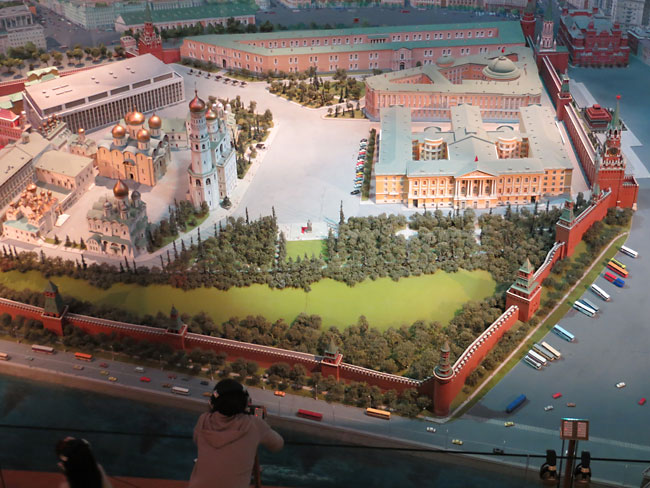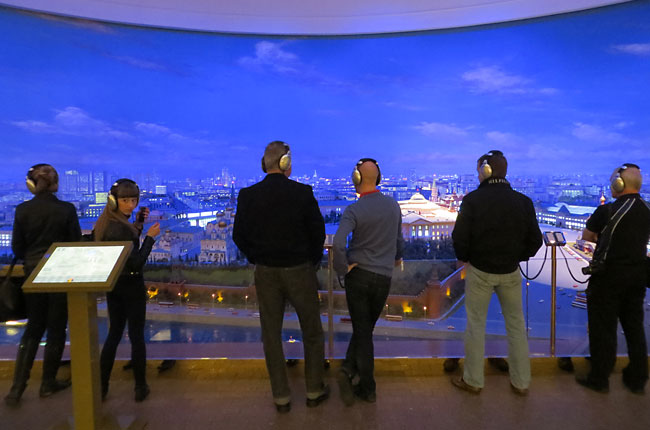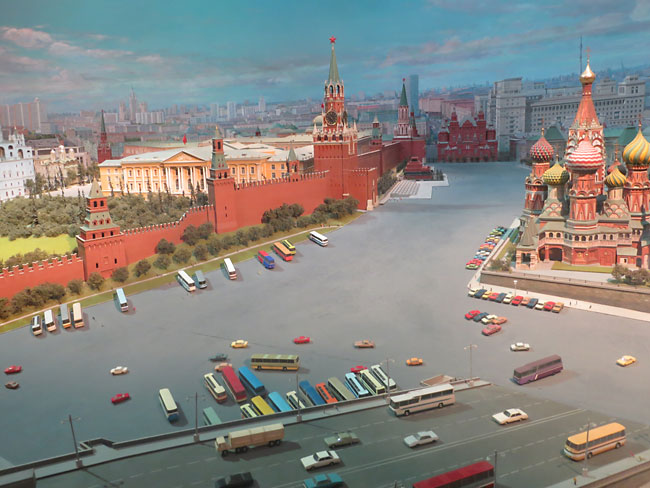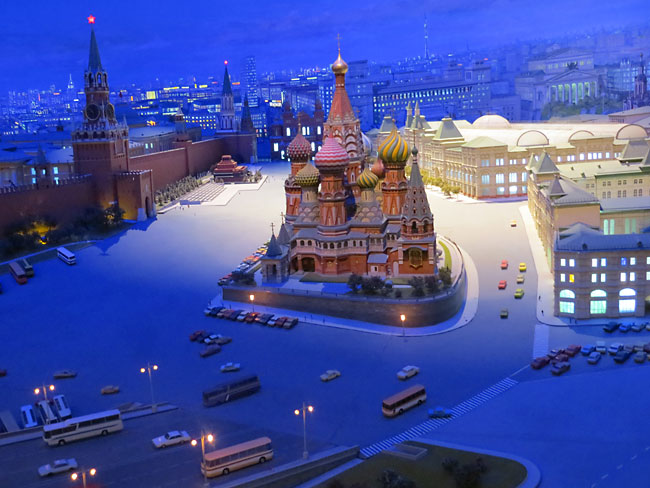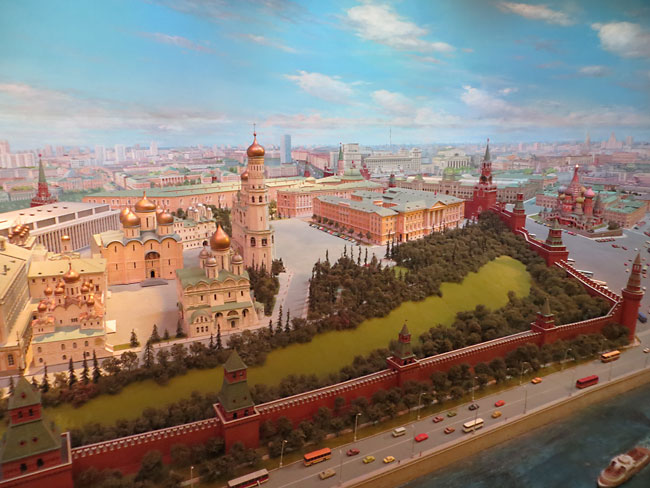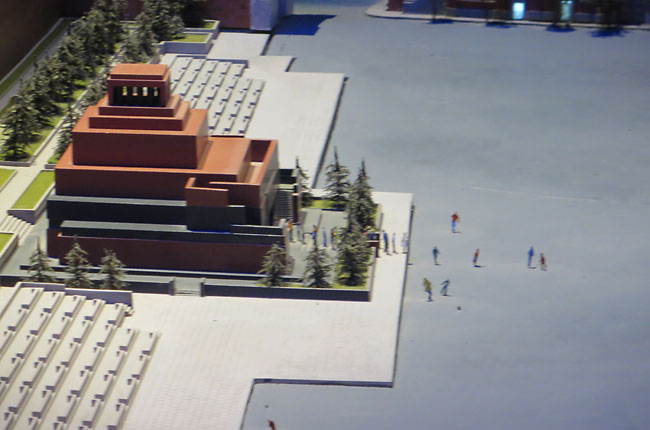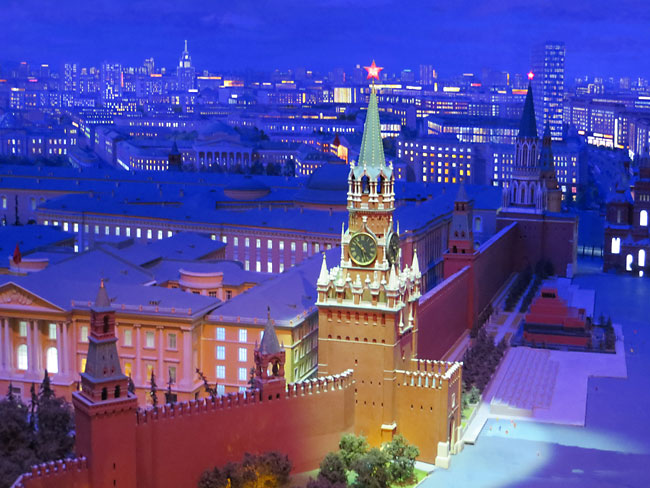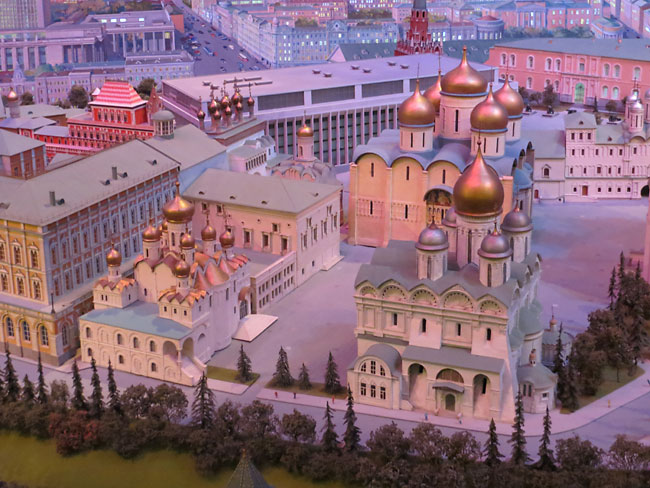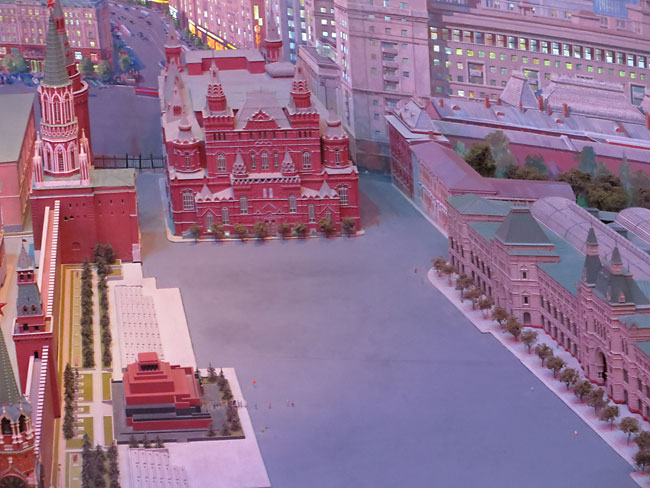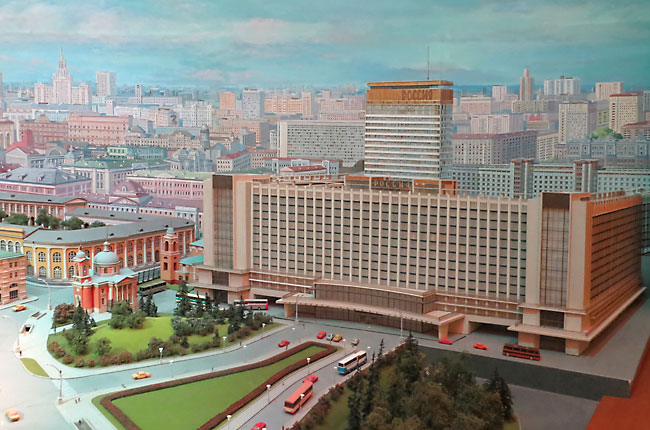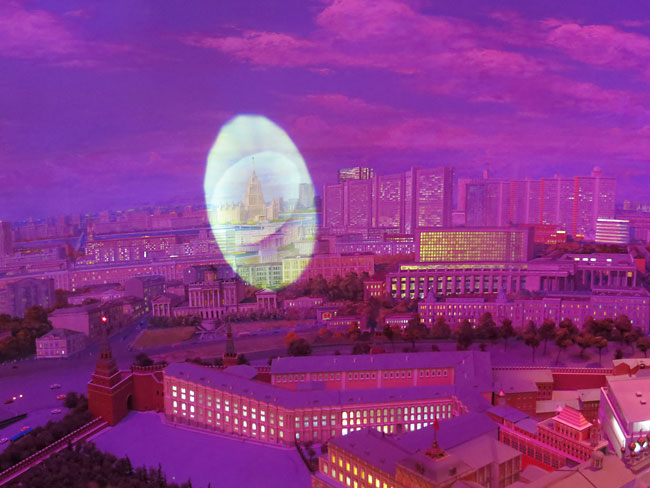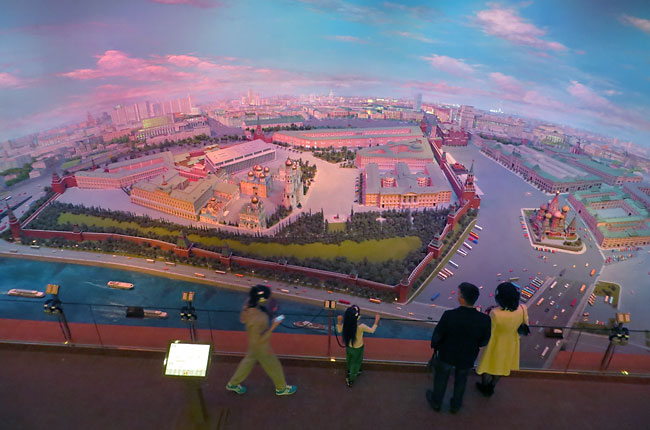|
The grand Hotel Ukraina houses a unique model of Red Square created by diorama artist Efim Deshalyt in 1977. The model, titled "Moscow: The Capital of the USSR" or "Panorama of Moscow," was commissioned by the Ministry of Foreign Affairs to commemorate the 60th anniversary of the Soviet Revolution.
Efim Deshalyt (1921-1996) worked as a film art director but was most famous as a painter of 19th-century-style panoramas and grand landscape murals of dramatic moments in Russian history (as well as small still lifes). The Panorama of Moscow model measures about 400 square feet and was built by 150 craftsmen. The model was part of the "Soviet National Exhibition" cultural exchange exhibit in Los Angeles in 1977, where it was a popular attraction, though it was upstaged by an exhibit of microminiatures by Armenian artist Eduard Kazarian.
After a tour of several countries in Europe, the model found a permanent home in 1980 at the All-Russian Exhibition Center northwest of Moscow. After the fall of the Soviet Union, the model was sold to a private investor and put on display at a shopping mall from 1997 until 2006 when the attraction closed. Citing high electricity costs for the model's elaborate lighting system and a lack of visitors (other than foreign tourists) the model was put up for sale in 2006 for 3 million Euros, which attracted much attention online. Fortunately it was not moved from the city or dismantled, but was purchased by the Hotel Ukraina, which restored the diorama and upgraded the lighting to a computer-controlled audio-visual tour available in four languages on listening stations overlooking the model.
Interestingly, the model has been cleaned and restored but not updated from its original design. It is a time capsule of Leonid Brezhnev-era central Moscow. This view of a vast parking lot of tour busses and little Ladas crossing the Bolshoy Moskvoretsky Bridge is what the Soviet Union chose to show off to the world in 1977.
When a visitor pushes a button to start the program, the lights dim and tiny interior lights of the model twinkle on. The flattened buildings painted on the backdrop, too, have transparent windows with lights inside. The audio guide describes notable landmarks and a spotlight shines on each briefly. The tour hurries along quickly and its hard to just relax and wander the miniature city with your eyes until the program is over and lighting returns to normal for a while until the next visitor pushes the start button again.
The model encompasses the entire walls of the Kremlin with its many gold-domed chapels and governement buildings. While the model is often described as being 1:75 scale, it is strictly speaking not a scale model (like the other Moscow city model) but a diorama which uses forced perspective so that the buildings at the rear are in a smaller scale than those at the front. The model is designed to be viewed from eye level near the center of the exhibit, so that a view from the balcony overlooking the model or from the sides betrays some of the distortion of the diminishing scale along the sides of the longer buildings.
There are some small people on the model, although they are not very noticeable at first. Here a tiny line of visitors is waiting to see Lenin in his Mausoleum. A speck of dust makes it look like some visitors are playing with a soccer ball just outside the tomb, though I doubt that's what is intended.
The magnificent Spasskaya Tower of the Kremlin features a tiny light-up star at its peak. I'm not sure if the clock on the model works. At this scale it would be about 3 inches wide, bigger than a wristwatch and easy enough to place a working mechanism inside.
A close up of several of the many little domes of the chapels of the Kremlin. The Kremlin Armory is on the left.
At the far end of Red Square is the State Historical Museum. Viewed from the balcony, the distortion of the forced perspective is noticeable, although the transition from 3D model to 2D painted backdrop is well done and not very noticeable at all. Just to the right of the Historical Museum is the site of the Resurrection Gate which was torn down by Stalin in 1931 to give military parades easier access to Red Square. A little farther to the right is the site of the Kazan Cathedral, also torn down in 1936. Both the gate and the cathedral were reconstructed from historical documents in the early 1990s.
On the far right of the model is the front half of the huge Rossiya Hotel, which was the world's largest with 3200 rooms. In 1977 the hotel must have seemed a wonder worth including in the diorama, but in later years it was much reviled for its bulk and ugliness. The hotel was torn down in 2006.
Although the model only includes the areas around the Kremlin and Red Square, the painted backdrop does show far away areas of the city. And there is where we are! For a few moments the audio guide spotlights the current location of the Panorama of Moscow at the Hotel Ukraina, one of the Seven Sisters skyscrapers built in 1957, the tallest hotel in Europe.
The Panorama of Moscow is a real masterwork of diorama art and it's fortunate that the hotel has given it a fine presentation here to keep it on display for the public. Visit other mini cities around the world |








